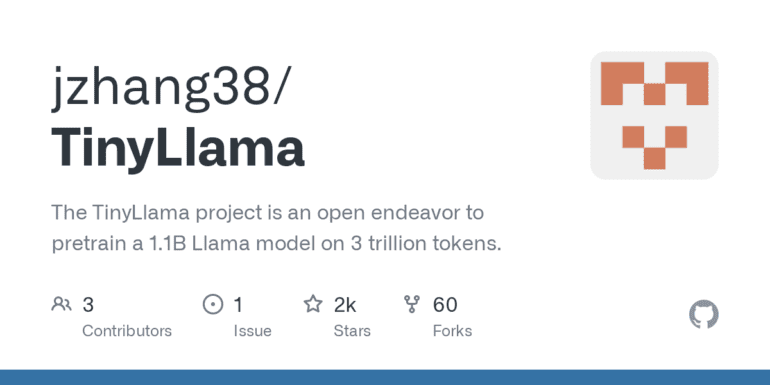TL;DR:
- TinyLlama, led by a Singapore University research assistant, aims to pre-train a 1.1 billion parameter model on a colossal 3 trillion tokens in just 90 days.
- This project challenges the Chinchilla Scaling Law, suggesting that smaller models can excel with extensive training data.
- Meta’s Llama 2 paper demonstrated that models can handle even 2 trillion tokens without saturation, inspiring TinyLlama’s audacious 3 trillion token goal.
- If successful, TinyLlama could empower AI applications on single devices, potentially revolutionizing the market.
- However, the outcome remains uncertain, as this endeavor is an open trial with no predefined targets beyond ‘1.1B on 3T’.
Main AI News:
In the dynamic landscape of Language Model research, the pursuit of efficiency and scalability has birthed a groundbreaking initiative – TinyLlama. Spearheaded by a dedicated research assistant at Singapore University, this audacious project seeks to pre-train a 1.1 billion parameter model on an astonishing 3 trillion tokens in just 90 days, employing a modest configuration of 16 A100-40G GPUs. The implications of this endeavor loom large, poised to redefine the limits of what we once thought achievable in the realm of compact Language Models.
While existing models such as Meta’s LLaMA and Llama 2 have already exhibited impressive capabilities at reduced scales, TinyLlama takes this concept a step further. With its 1.1 billion parameter model occupying a mere 550MB of RAM, it emerges as a potential game-changer for applications with constrained computational resources.
Critics have raised questions about the feasibility of such an ambitious undertaking, particularly in light of the Chinchilla Scaling Law. This law posits that for optimal computational efficiency, the number of parameters and training tokens should scale proportionally. Nevertheless, the TinyLlama project boldly confronts this notion, striving to prove that a smaller model can thrive when trained on an extensive dataset.
Meta’s Llama 2 paper unveiled a remarkable revelation: even after pretraining on 2 trillion tokens, the models showed no signs of saturation. This revelation likely fueled the scientists’ determination to push the boundaries further by targeting a 3 trillion token pre-training for TinyLlama. The debate over the necessity for ever-expanding models rages on, with Meta’s efforts to challenge the Chinchilla Scaling Law taking center stage in this discourse.
Should TinyLlama achieve success, it has the potential to usher in a new era for AI applications, empowering robust models to operate on individual devices. However, if it falls short, the Chinchilla Scaling Law may find renewed validation. Researchers maintain a pragmatic perspective, underscoring that this endeavor constitutes an open trial with no assurances or predefined objectives beyond the ambitious ‘1.1B on 3T’.
As the TinyLlama project advances through its training phase, the AI community observes with eager anticipation. Success could not only defy established scaling laws but also revolutionize the accessibility and efficiency of advanced Language Models. Only time will unveil whether TinyLlama emerges victorious or if the Chinchilla Scaling Law maintains its ground in the face of this audacious experiment.
Conclusion:
TinyLlama’s audacious quest to redefine Language Models by combining efficiency and scale has the potential to disrupt the market. If successful, it could lead to a new era of AI applications, making advanced models accessible on individual devices. This could have significant implications for businesses looking to leverage AI for various applications. However, it also presents risks if it falls short, as it challenges established scaling principles. The market should closely monitor the outcomes of this project, as it may reshape the landscape of AI technology.

